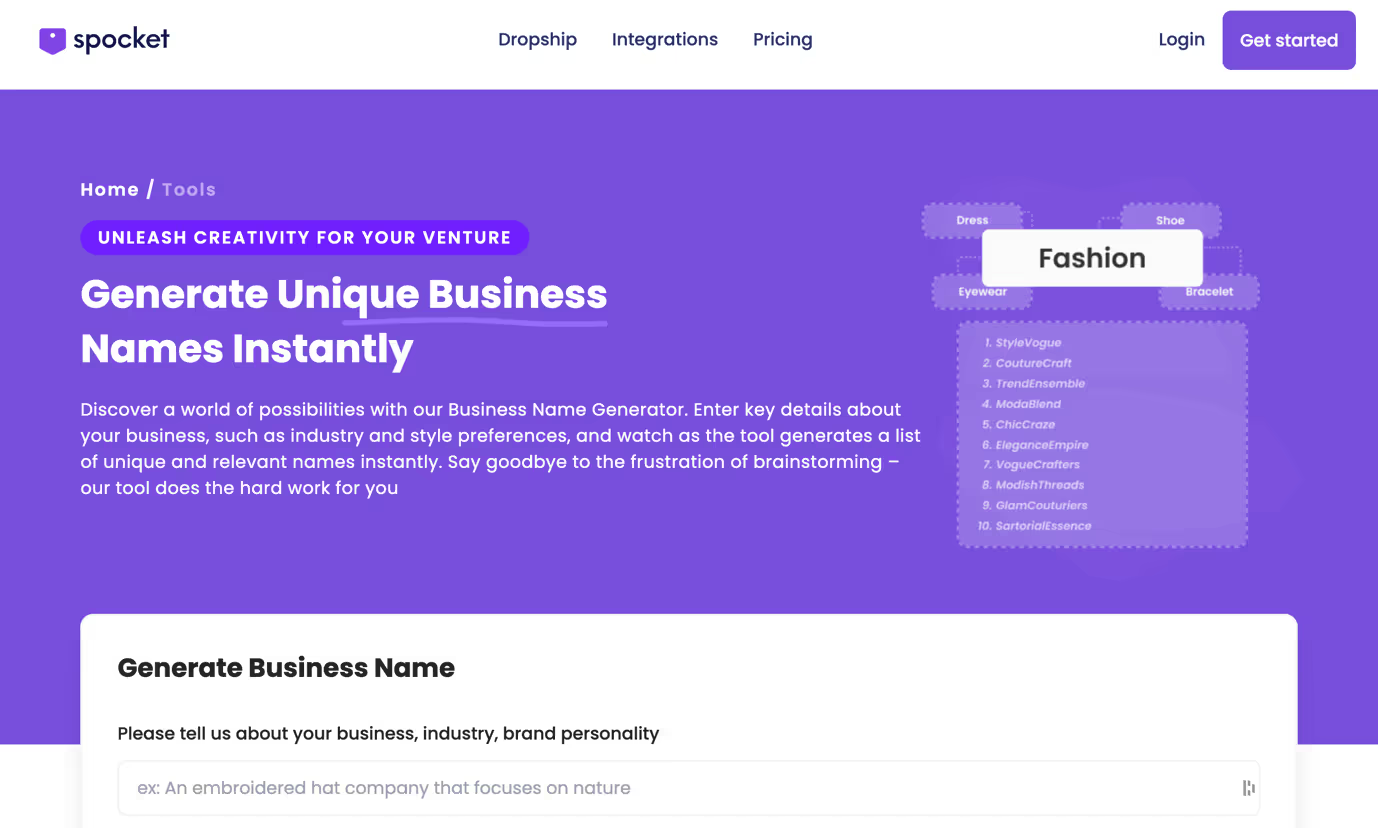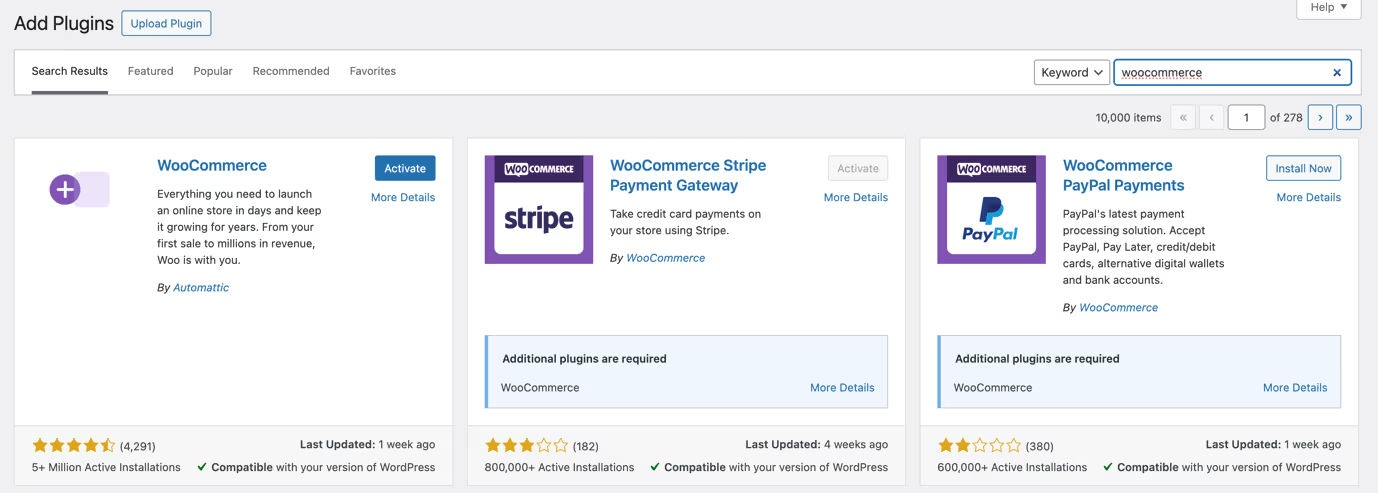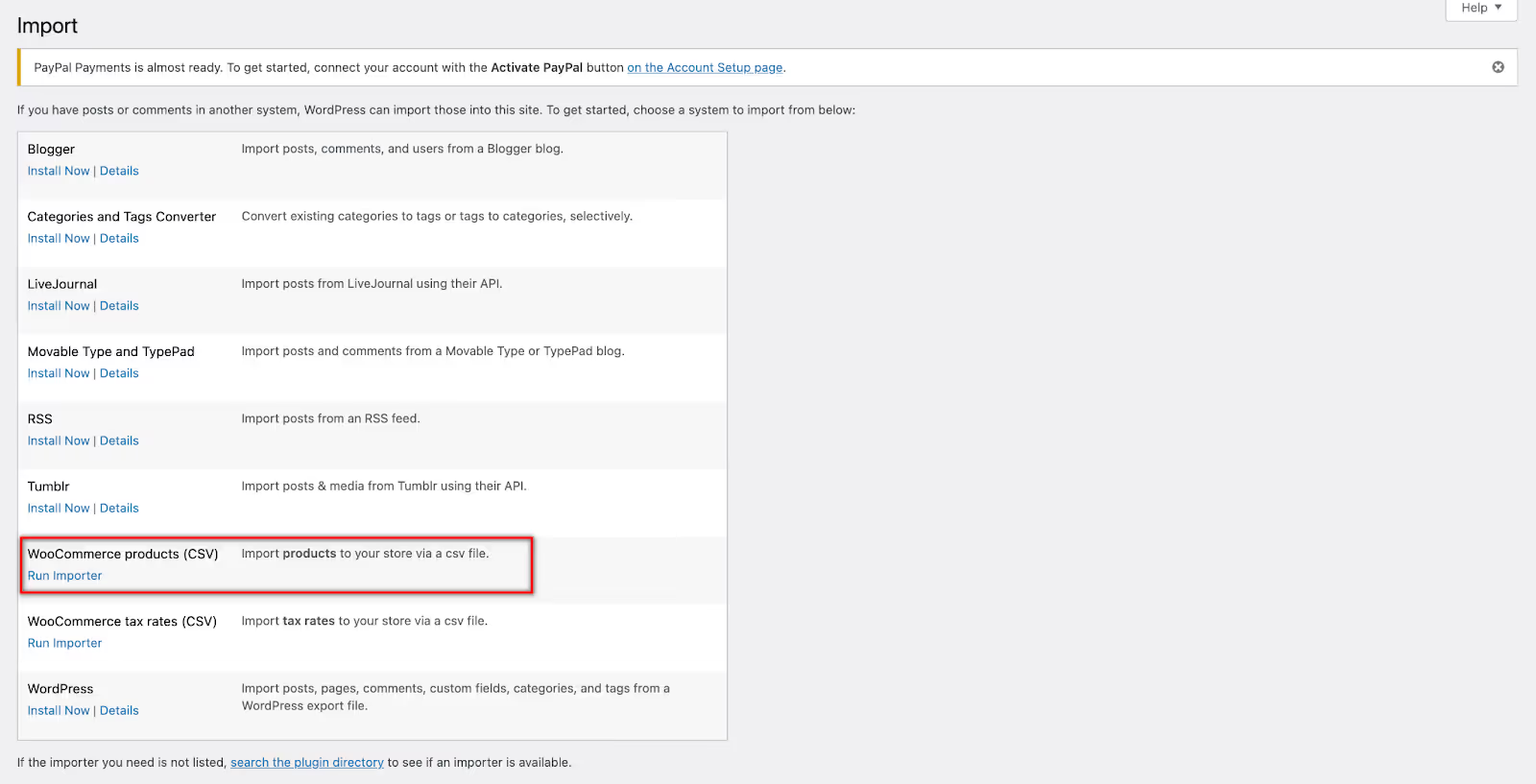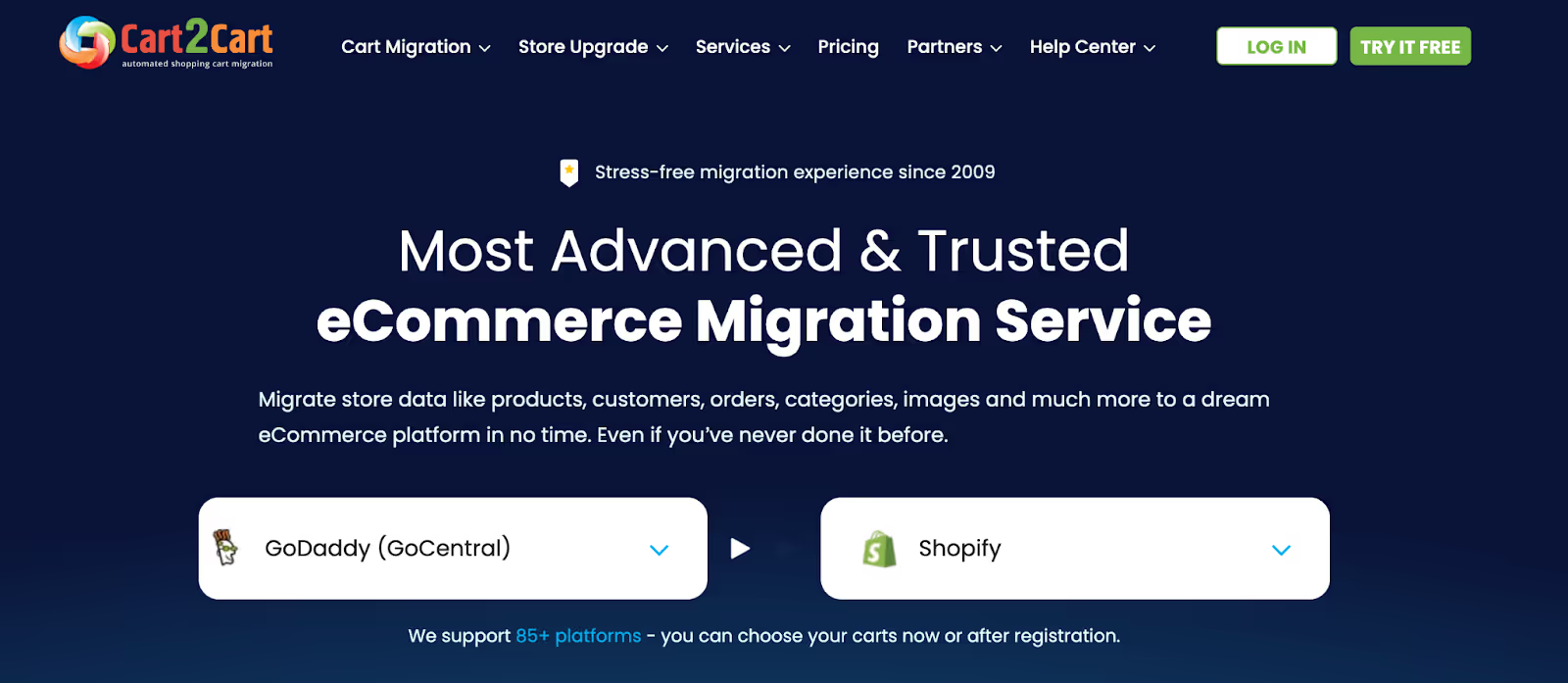Have you outgrown your Shopify store and need more flexibility? WooCommerce might be the solution for you.
WooCommerce lets you configure taxes, add custom shipping, and control your store’s design—things you don’t get with Shopify. Plus, you can publish unlimited products for free.
You can migrate your store easily with the right steps. In this article, I’ll guide you through the process to ensure a smooth transition from Shopify to WooCommerce. Let’s get started.
Why Migrate from Shopify to WooCommerce
Shopify and WooCommerce are two of the most popular eCommerce platforms. They both let you create an online store, but they work differently. Shopify is fully hosted, so you don't worry about backups or updates. But it costs more and limits your control over your website.
WooCommerce is open-source software that you install on your own hosting. This means you have complete control and can customize your store however you want. You don’t pay extra transaction fees, unlike Shopify.
Due to these reasons, many Shopify users switch to WooCommerce for managing their online store.
Pros and Cons of Switching from Shopify to WooCommerce
WooCommerce and Shopify are both popular platforms for the eCommerce industry. WordPress, which powers WooCommerce, holds the largest share in the CMS market. WooCommerce is the most used plugin for eCommerce websites, paired with WordPress.
Let’s look at the pros and cons of using WooCommerce:
Pros
- WooCommerce is a free and open-source platform for eCommerce websites.
- The platform is completely customizable, allowing access to the source code.
- WooCommerce offers excellent flexibility with its layouts and themes.
- Using WooCommerce means you have access to a close-knit community. You can leverage this to learn the platform and discuss your issues with experts.
Cons
- WooCommerce does not provide everything out of the box; for certain features, you will have to install additional plugins.
- WooCommerce does not have a dedicated customer support team. You can access communities for the issues you are facing.
- Some additional plugins are necessary but can be very expensive.
- Sometimes, it slows down the site when loading information.
Steps to Migrate from Shopify to WooCommerce
1. Back Up Your Shopify Store
Switching from Shopify to WooCommerce is essentially a risk-free process when it comes to your store's data. However, you'll still want to create a backup in case anything goes wrong.
Shopify lets you export product data via CSV, which you can import into WooCommerce. This includes products, customers, and some financial data.
But you can't export themes or metafields with a CSV. For that, use a backup app like BackupMaster. It backs up products, themes, blogs, orders, metafields, and files. This way, you can restore everything—whether it's the whole store or just single items.

2. Get a domain and web hosting
Before you move from Shopify to WooCommerce, you need to set things up. Start by getting a domain name. You can find one for $7-$20 through places like GoDaddy and Namecheap.
Consider registering a .com domain as it's the most recognized. While some stores use other extensions like .store or .shop, .com is still the best choice.
You'll also need to think of a business name for registering your domain. Make sure it's unique and memorable. If you're short on ideas, use Spocket’s business name generator to spark new ones.

Since WooCommerce is self-hosted, you'll also need to choose a web hosting solution. Many hosting providers are tailored towards WordPress and WooCommerce users. Look for those that offer:
- One-click WordPress install
- Free SSL certificates
- Good customer support
- Automatic backups
- Optimization for high-traffic stores
Some good options are:
- Bluehost WooCommerce: Easy setup with a free domain name and one-click WordPress install. Ideal for those not comfortable with tech.
- Hostinger WooCommerce: Great for beginners. Includes daily backups, free SSL, and a free domain.
- SiteGround Cloud: Optimized for eCommerce apps like Magento and WordPress. Perfect for resource-heavy online stores.
Pro Tip: Some web hosts also sell domain names as part of their packages. If you want to manage your domain and hosting in one place, check which companies offer both.
3. Install WordPress and WooCommerce
To import Shopify products to WooCommerce, you need to create a WordPress website first.
Start by installing the core WordPress software to your web hosting account. Here are the steps:
- Go to the WordPress website and download the latest version.
- Unzip the downloaded file and save it as a folder on your computer.
- Upload the folder's contents to your web hosting account.
If you don’t want to install WordPress manually, many web hosts have an auto-installer that sets up WordPress for you.
Once WordPress is up and running, you’ll have access to the dashboard. Here, you control your website’s settings, layout, and content.
Since you want an online store, you’ll need to install WooCommerce. Here’s how:
- Log into WordPress, then click Plugins > Add New.
- Type “WooCommerce” in the search bar at the top.
- Find WooCommerce in the results. Click Install Now and wait for WordPress to download and install the plugin.
- Once the Activate option appears next to WooCommerce, click on it.

Now you should have a WooCommerce site ready to import products to.
4. Export Items from Shopify
Shopify lets you export your entire product catalog in CSV format, including titles, slugs, tags, variants, and prices. To do this, go to your Shopify account and navigate to Products > All Products. You’ll see a list of all your products and options to import and export data.
Click the Export button at the top of the screen. Shopify will ask which products you want to export. Select All products and choose CSV for Excel (or another relevant option) under Export as.

After clicking Export Products, wait for Shopify to send you an email containing the CSV file with all your product data. The email might take a while to arrive, depending on your inventory size. When it arrives, save the file to your computer. You’ll need it for the next step.
5. Import Your Shopify Products Into WooCommerce
Now that you have exported your Shopify data, the next step is to import it into your WooCommerce store. For this purpose, you can use the WooCommerce Product Importer tool.
Using the WooCommerce Product Importer
The Woocommerce Product Importer tool lets you import product lists in CSV format. Since you already downloaded your Shopify catalog as a CSV file, this process is simple.
Keep in mind, that this method only imports products. Your customers, order history, images, and reviews will stay in Shopify. You’re basically starting over with WooCommerce using your existing inventory.
If that’s okay, let’s import your Shopify CSV file into WooCommerce. Here’s how:
- Access the WordPress dashboard and go to Tools > Import.
- Find the WooCommerce products (CSV) option and click Run Importer.

- On the next page, choose the file you want to import. Leave the option to update existing products unchecked since you’re starting fresh.
- Select the CSV file you downloaded earlier and click Continue.
- Match product data from the CSV file to WooCommerce fields. Exclude any unnecessary fields, like SEO Title and SEO Description.
Once you’re happy with your choices, click Run the importer. WooCommerce will take some time to import your Shopify product data.
After the import is complete, you’ll see a success message. Click on View products to go to the Products > All Products tab and see an overview of the items you just imported.

Remember, WooCommerce won’t import product images, so you must upload those manually. Check each item to ensure it’s not missing any critical information. If needed, rerun the importer to port the correct fields to WooCommerce.
6. Update Your Domain Records
At this stage, you should have a fully working WooCommerce store with all your Shopify products. However, you still need to update your domain records to point to your new web host.
Currently, your domain points to your Shopify store. You probably don’t want to register a new domain, as you’ll have to build traffic from scratch and may lose a significant percentage of your customer base.
The process for changing your domain varies depending on your service provider. If you use a domain registrar, you’ll need to update your records there. This process differs from registrar to registrar.
For example, if you registered a domain through Shopify, you’ll need to edit your DNS settings using their platform. Follow the specific instructions from your domain registrar or hosting provider to ensure your domain points to your new WooCommerce store.
7. Update URLs in WooCommerce

It’s best to choose a permalink structure when you start your WooCommerce store. Changing it later can impact your SEO and cause errors on your site. Setting it early on prevents future headaches.
Update Internal URLs
Next, you might have URLs in your product descriptions still pointing to your old Shopify domain. To bulk update these URLs, install and activate the Go Live Update Urls plugin.
Visit Tools > Go Live. Enter your Shopify store URL as the old URL and your WooCommerce domain as the new URL. Click the Update Urls button to fix all links across your site. Once done, you can uninstall the plugin.
Setting Up Redirects for Individual Pages and Posts
If you have blog posts or pages, set up redirects to ensure visitors and search engines go to the correct page. Install and activate the All in One SEO (AIOSEO) plugin.
After activation, follow the setup wizard. Go to All in One SEO > Redirects. Enter the old URL in the Source URL field and the new URL in the Target URL field. Set the Redirect Type 301 Moved Permanently and click Add Redirect. Repeat this for other links. AIOSEO keeps a log of the redirects, showing you the number of people visiting the redirected link.
8. Work On Your Store’s Design
In your new WooCommerce store, the pages might not resemble their Shopify counterparts. This is because you are still using one of the default WordPress themes.
At this point, you have two options for designing your new store:
- Recreate the style of your Shopify store
- Apply a new WooCommerce template.
Recreating your Shopify store design can make the transition smoother for existing customers. However, starting over with a new WooCommerce template allows you to take advantage of the greater customization options that WordPress offers.
WordPress gives you access to multiple page builder plugins that work with WooCommerce, enabling you to customize your store extensively. You can also use the built-in Block Editor with a WooCommerce-friendly theme.
Both options are viable, so decide which approach works best for you and make the most of the features that WordPress and WooCommerce offer.
9. Using a Service to Transfer Shopify Data To WooCommerce
Migrating from Shopify to WooCommerce is common. Plugins and services simplify the process. Using Shopify migration tools automates the entire process and allows you to port data that a simple CSV file can't handle.
Cart2Cart is a useful tool for this purpose, enabling a smooth migration of products, customers, orders, and other data from Shopify to WooCommerce.

How to Use Cart2Cart for Migration
1. Create an Account
Sign up on Cart2Cart with your email, password, and full name, or use your Facebook account.
2. Start Migration
Choose between Free Demo Now or Get Estimates. For now, we’ll use the Free Demo.
3. Prepare Shopify API Key
- Log in to Shopify, go to the Apps menu, and click Manage Private Apps.
- Create a private app, name it (e.g., Cart2Cart), and enter your email.
- Set permissions to Read and write or Read Access.
- Permit the app to access your store’s data using the Storefront API and save.
- Retrieve the API key, password, and other details generated by Shopify.
4. Setup Connection Bridge for WooCommerce
- Download the Connection Bridge from Cart2Cart.
- Extract and upload the bridge folder to your WooCommerce root directory using an FTP server.
5. Configure Cart2Cart for Migration
- Source Cart Setup: Select Shopify as the source cart and enter your Shopify URL and API password.
- Target Cart Setup: Select WooCommerce as the target cart and enter your WooCommerce URL.
- Choose Entities: Select all entities for migration. You can also map order statuses and custom groups.
6. Run the Migration
- Click Start Free Demo to preview the migration process. If satisfied, proceed with the full migration.
- Once the migration is complete, review the summary to ensure all data has been transferred correctly.
Your Shopify products, categories, customers, and orders should now be successfully migrated to WooCommerce. Review your WooCommerce store to confirm all data is in place and functioning as expected.
Final Verdict
There you have it—all the steps you need to migrate from Shopify to WooCommerce. With WooCommerce, you get much more control over your store than Shopify offers. Go ahead and make the switch, and explore the endless possibilities of WooCommerce.
Migrating from Shopify to WooCommerce FAQ
If I export data from my current Shopify site to WooCommerce, will that affect my existing site?
It won’t. The data is just downloaded from one place and uploaded to another. Your current Shopify store stays as is.
Can we convert the Shopify website into WordPress?
Only the data can be transferred from Shopify to WordPress. Themes and apps won’t migrate. You’ll need to redesign your site on WordPress.
What are the best tools to migrate from Shopify to WooCommerce?
The top three tools are Cart2Cart, Next-Cart, and LitExtension. They help you move products, customers, orders, and more. All offer easy migration services.
Do I need to update my SEO before migrating my online store?
Yes. Use SEO tools like Semrush or Ahrefs to check your URLs and tags. Make sure you have working 301 redirects to maintain your rankings.
Is WooCommerce better than Shopify for dropshipping?
A: WooCommerce offers more control and is cost-effective. However, Shopify is hassle-free and scalable. Spocket integrates with both platforms to help you get started quickly.


























![Woocommerce vs Webflow para sitio web de comercio electrónico [2024]](https://cdn.prod.website-files.com/5b476bdb731aa1e787a6aa02/667ebc1637be5e783b19a2e6_Woocommerce%20vs%20Webflow.avif)
![Woocommerce frente a Adobe Commerce (Magento) para el sitio web de comercio electrónico [2024]](https://cdn.prod.website-files.com/5b476bdb731aa1e787a6aa02/667c72aaf136918f33d4837f_adobe%20vs%20magento%20small.avif)










